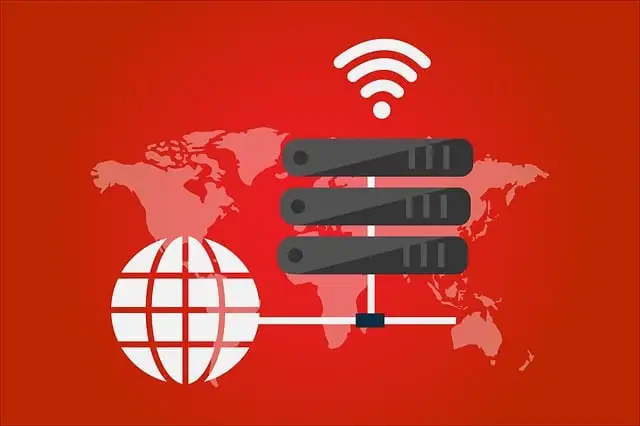Introduction:
Has a website blocked you? But you want to get in? Can’t you access a website just because of your location? But you wanted to access it? Are you concerned about your online privacy? – want to surf privately? Are you sick of online trackers? – want to get rid of them? Fortunately, you can do all the abovementioned things using a technique called “IP spoofing” or “IP address spoofing.” But what is an IP spoofing technique? And how can you do that? Let’s discuss them in this article.
Table of Contents
What is IP spoofing?
In simple words,
- IP address spoofing means hiding/changing a computer’s true IP address to make it look like you are located elsewhere.
Technically,
- IP spoofing is the practice of disguising a computer’s true IP address by replacing it with a false one, allowing the computer to masquerade as another device or location on the internet and potentially gain access to restricted resources.
Ip spoofing can be done for various reasons, including hiding the sender’s identity, impersonating another user or system, or bypassing security restrictions.
When IP address spoofing is used for malicious purposes, it is often combined with other attacks, such as denial-of-service (DoS) attacks, man-in-the-middle attacks, and session hijacking. IP spoofing can also make it difficult to trace the source of an attack or identify a user’s actual location.
Why do people spoof IP addresses?
When you connect to the internet, your ISP (internet service provider) assigns you an IP address. This IP address is a unique number that identifies your device and its location – it can be used to track your online activity and even pinpoint your physical location. So, when it comes to online privacy, one of the most important things you can do is hide your IP address.
That’s why more and more people are looking for ways to spoof their IP addresses. By changing or spoofing your IP address, you can make it harder for snoopers and hackers to track your online activity and gain access to your personal information.
Sometimes, you may need to spoof your IP address in order to access certain websites or online services. For example, suppose a website is only available in certain countries. In that case, you may need to change your IP address to one that is located in the allowed country.
IP spoofing is a tactic most commonly used by hackers to gain access to a computer or network. There are several reasons why a hacker might want to spoof their IP address.
- By spoofing the IP address of a trusted host, the hacker can trick the target computer into thinking that the hacker is a trusted user. Doing this can allow the hacker to gain access to sensitive information or perform malicious actions on the target computer.
- A hacker can conceal their identity and location by spoofing their IP address. Doing this can make it more difficult for the authorities to track down the hacker and bring them to justice.
- Additionally, IP spoofing can allow the hacker to bypass security measures that are in place to block unwanted traffic. For example, suppose a hacker is trying to gain access to a computer that is behind a firewall. In that case, they may try to spoof the IP address of a trusted host to bypass the firewall and gain access to the target computer.
In the next section, Let’s see how to spoof IP.
5 Ways to Spoof Your IP Address:
When it comes to IP address spoofing, there are a few different ways that you can go about it. The most common methods are,
- Using a VPN
- Using a proxy server
- Using Tor network
- Using SSH tunnels
- Using Smart DNS Proxies
How to spoof IP using a VPN
A VPN, or Virtual Private Network, is a service that encrypts your traffic and routes it through a server in another country, making it appear as if your traffic is coming from that country and not from your actual location. This can be useful for accessing geo-blocked content or keeping your online activity private.
For example, if I choose Canada, then the VPN will make it look like I’m surfing the internet from Canada. Everything will be changed accordingly—the search results, the websites, the currency, etc.

There are several VPN providers out there, and they vary in terms of features and price. Some are better for accessing geo-blocked content, while others are better for privacy. Before choosing a provider, you’ll need to decide which is more important to you. Here are a few VPN providers CyberghostVPN, ExpressVPN, NordVPN, etc.
Once you’ve chosen a provider, setting up the VPN is usually pretty straightforward. You’ll need to install the software on your device and then connect to the server in the location you want to appear as if you’re in. After that, all your internet traffic will be routed through the VPN server, allowing you to access geo-blocked content or keep your activity private.
How to spoof IP using a Proxy Server
A proxy server basically acts as a middleman between your computer and the internet. When you access a website through a proxy server, the website will see the IP address of the proxy server instead of your actual IP address. They work similarly to VPNs but are usually less reliable and slower.

If you’re looking to spoof your location using a proxy server, there are a few things you need to keep in mind. First, not all proxy servers are created equal. Some proxies are much faster and more reliable than others. Second, many proxy servers will not work with certain websites and services. This is because some websites and services can detect when you’re using a proxy and block it.
In case your IP got blocked – Your IP has been temporarily blocked? Resolve Easily in 2 mins
That being said, if you’re looking for a reliable proxy server for IP spoofing, we recommend using paid proxies. Once you get the proxy, you can start using it by manually entering the proxy’s IP address and port number into your browser’s advanced settings, or you can use browser add-ons to insert the proxy. That’s it, and now you can surf the web with a new spoofed IP address.
How to spoof IP address using the Tor Network
The Tor network is a system of volunteer-run servers that helps to anonymize Internet traffic. When you use the Tor network, your traffic is routed through multiple servers, making it very difficult to trace back to your original IP address. You may have often heard the word “Tor” with the Dark Web or Deep Web, as this Tor browser helps you access the Dark Web.
Malicious actors use IP spoofing techniques to access the Dark Web or Deep Web anonymously using the Tor browser and potentially perpetrate malicious activities such as cybercrime or data theft.

To use Tor, you first need to download and install the Tor Browser. Once the browser is up and running, you can access the Tor network by connecting to a “bridge” node. A bridge is a relay node that is not listed in the public directory, making it more difficult for an attacker to block.
Once you are connected to the Tor network, your traffic will be routed through a series of nodes before exiting onto the public internet. This makes it very difficult to track where your traffic is coming from, as your original IP address will be hidden among the many other users on the network.
Things to keep in mind while using Tor:
- Your connection will be slower than usual as traffic is routed through multiple nodes.
- You should avoid downloading large files or accessing sensitive websites while using Tor, as this can put a strain on the network and make it easier for an attacker to identify your traffic.
- Make sure you use the latest Tor Browser version, as older versions may have security vulnerabilities.
– Using SSH Tunnels
SSH tunnels work by forwarding traffic from your device to a remote server through an encrypted connection. This means that anyone eavesdropping on your traffic will only see the server’s IP address, not your real IP address.
There are a few different ways to set up an SSH tunnel, but we recommend using a tool like Tunnelblick on macOS or PuTTY on Windows. Once you have one of these tools installed, follow the instructions for setting up an SSH tunnel to a remote server.

Once you have your SSH tunnel up and running, all you need to do is configure your web browser or other applications to use the tunnel as a proxy. This will route all of your traffic through the tunnel, keeping your real IP address hidden.
– Using Smart DNS Proxies
A Smart DNS proxy is a server that allows you to change your DNS settings to access geo-blocked content. When you connect to a Smart DNS proxy, your traffic is routed through the proxy server, which changes your DNS settings and makes it appear as if you are accessing the internet from the country where the proxy is located. This allows you to bypass geo-restrictions and access websites and streaming services that are only available in certain countries.
There are many benefits of using a Smart DNS proxy, including the ability to unblock websites and stream content from anywhere in the world. However, one of the main advantages of using a Smart DNS proxy is that it does not slow down your internet connection as a VPN does. This means you can browse the internet and stream video at high speeds without any interruptions or buffering.
Benefits of IP Spoofing
1. Anonymity:
When you spoof your IP address, your true identity and location are hidden from whoever you’re communicating with. This can be useful for privacy or security reasons, as it makes it much harder for someone to track you down or target you with attacks.
2. Accessibility:
In some cases, changing your IP address can allow you to bypass restrictions or filters that are in place. For example, if a website is only accessible from specific locations, you may be able to trick it into thinking you’re in an allowed country by spoofing your IP address.
3. Fraud prevention:
Spoofing your IP address can also help protect you from fraudsters who may try to use your real IP address to commit crimes such as identity theft or credit card fraud. By making it appear as if you’re coming from a different location, you can reduce the chances that they’ll be successful.
Potential Risks of IP Spoofing
One potential risk of IP spoofing is that it can be used to launch attacks against other computers or networks. An attacker can trick the target into accepting illegitimate traffic by impersonating another system. Doing this can allow the attacker to access sensitive information or launch further attacks.
Another risk is that spoofed packets can disrupt normal communication between systems. This can cause problems ranging from minor inconveniences to major outages. In some cases, it is possible for an attacker to redirect traffic destined for one system to another, allowing them to intercept and read confidential data.
Finally, IP spoofing can make it challenging to track down the source of an attack or other malicious activity. Suppose investigators are looking at logs from a system that received spoofed packets. In that case, they may misattribute the activity to the wrong source IP address. This could lead to innocent parties being wrongly accused or penalized while the real culprit remains free to continue their activities undetected.
Conclusion
IP address spoofing is a powerful technique for anyone looking to mask their online activity and fake their location. As long as you take some necessary precautions when using it, IP address spoofing can effectively protect your privacy and keeps your data safe from malicious actors. With the methods mentioned above, you should now have the knowledge to change or hide your IP address whenever possible. By understanding the various methods of changing or hiding your IP address, you can protect yourself from potential vulnerabilities that may arise from having an exposed IP address.











